Source: CCTV.com
08-02-2006 14:53
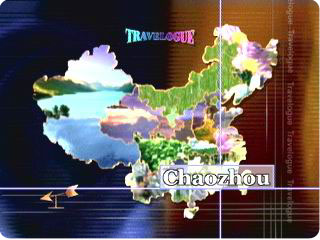
Chaozhou City is situated in the east of Guangdong, the middle lower reach of Hanjiang River. The area is 3,613.9 square kilometers, of which the land area is 3,080.9 square kilometers, sea area 533 square kilometers, with a coastal line of 136 kilometers.
Chaozhou is a famous homeland of overseas Chinese, which numbered over 2.30 million including compatriots in Hong Kong, Macao and Taiwan.
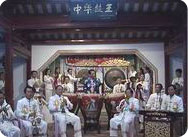
Chaozhou is a famous historical and cultural city in the country, with over 700 relic spots. Among which are Guangji Bridge, built in the South Song Dynasty (1171 A.D.) and Xu, Imperial Son-in-law, Mansion, which retains the basic pattern of the architecture of the Song Dynasty. Kaiyuan Temple, a Buddhist center in East Guangdong, embodied with the quintessence of the architectural art of various dynasties such as the Tang, the Song, the Yuan and the Qing, Huang Konglue Temple, displaying the carving art of Chaozhou in the Qing Dynasty, and the old site of Song Kiln, that shows the scale of production and the exquisite craftsmanship of ceramic in ancient Chaozhou. They are the key units for cultural protection at the state level.
Jiadixiang, the ancient family houses; the Ming city wall, 2.6 kilometers long; Chaozhou dialect, Chaozhou opera, Chaozhou Kungfu tea, and etc. all have unique features of Chaozhou culture, attracting numerous tourists from home and abroad, and are the richly endowed tourist resources.
Kungfu tea
Kungfu tea (Kungfu cha), the "espresso" of Chinese teas with a formidable kick, which was first sipped back in the Song Dynasty (440-479AD), is still flourishing and remains an important part of social etiquette in Chaozhou. If you visit a family, you can be sure of at least one round of Kungfu tea.
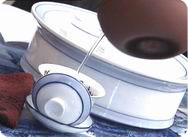
Kungfu tea, to which manual skill, high quality tea leaves and water as well as appropriate temperature control are critical, brings out the best that tea, especially the fermented Wulong tea, can offer.
It is a true art form to prepare the tea. Making basic Kungfu: first, clean the teapot with boiling water to make better tea with a warm teapot. Then fill in the teapot with a big handful of tea leaves, making sure the leaves, after being soaked with hot water, will stick out the mouth of the teapot. Next, pour boiling water into teapot. The water should overflow so as to get rid of impure materials and foam, and to make mellow tea. A few seconds later, the tea should be poured into cups, which are usually arranged in a circle. The last step is to pour tea with a few rounds of circular motions into each cup so as to make sure the tea in all the cups is the same in terms of color and fragrance. To avoid creating foam, the teapot should be held close to the teacups.
Though it tastes bitter when it first reaches your mouth, it is the lingering aftertaste that makes Kungfu tea probably the most charming tea culture in China. Drinking Kungfu tea is in fact a process of aesthetics rather than a solution to thirst.
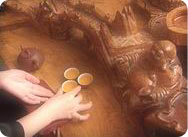
For ordinary people, after a long day of hard work, a round of Kungfu tea offers refreshment and physical relief. This is one of the important reasons why the tradition lives on. Some even use Kungfu tea to stimulate their minds and seek inspiration, a much healthier method than relying on caffeine or cigarettes.
Chaozhou Cooking
Chaozhou is the name of a coastal region around the Shantou district of eastern Guangdong province. Naturally, as a fishing area, seafood features prominently in the hearty cuisine, which is often enhanced by piquant sauces, such as tangerine jam for steamed lobsters and broad-bean paste for fish. Famous dishes include salt-baked goose with vinegar juice, mixed meats with beancurd and meatballs in casserole.
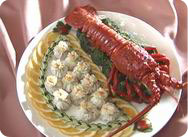
Such richly flavored dishes reflect the culinary influence of the Chaozhou people's northeastern neighbors, the Fukienese. Yet Chaozhou cuisine has also been greatly influenced by its southwestern neighbors, the Cantonese.
Many Chaozhou classic dishes are light and tasty, with an abundant use of vegetables. The crisp delicacy of deep-fried leaf vegetables in Chuenjew dishes adds a gleaming green, very edible garnish to many dishes.
Chaozhou chefs pride themselves on their skill in vegetable carving. Magnificent designs - flowers, birds, dragons and phoenixes - made from carrots and ginger adorn the Chaozhou banquet table and cold dishes.
The region's chefs are also acknowledged masters in the preparation and cooking of two de luxe delicacies, shark's fin and bird's nest. Chaozhou cuisine is famous, too, for its shellfish dishes and wide variety of sweet dishes (with pumpkin and taro).
A very pungent regional speciality is the strong Kungfu tea, served in tiny cups before and after a meal as a digestive aid.
Chaozhou ceramics
Over the years, Chaozhou has earned the title of South China's ceramic capital due to its rich clay resource and a ceramics industry that is over 2,300 years old. Fengxi, the center of ceramic production at Chaozhou, is home to more than 3,000 factories, employing a total of 50,000 workers.
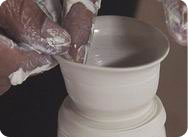
In 2001, the first Fengxi Ceramic Fair kicked off. The bi-annual event is held every April and October, usually a week before the spring and autumn editions of the Canton Fair. To date, buyers from the United States, Europe, South Korea, the Philippines, Indonesia, Ecuador, the United Arab Emirates, Saudi Arabia and Taiwan have attended the fair.
Makers improve product durability, production efficiency:
Daily-use items, which represent 25 percent of the output, are commonly made of stoneware, white jade, dolomite, bone and reinforced ceramic. These come with underglazed, overglazed, medium-glazed or color-glazed finish.
Some makers however, are moving beyond the usual materials and glazes to improve product durability and appearance. Many makers also are reducing production costs by improving efficiency.
They added white jade and bone ceramic to conventional stoneware and are in the process of developing products with a glass-like glaze. The products are claimed to have brighter and smoother surfaces.
Lightweight dolomite ideal for art pieces, décor:
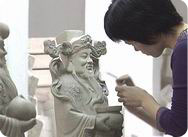
Compared to conventional ceramic ware, dolomite items are 40 percent lighter, more flexible, and carry brighter underglazed colors. Because the material offers greater design flexibility, dolomite is used more for art pieces and decorative items, and less for dinnerware.
In fact, unlike conventional daily-use dinnerware, dolomite versions usually serve a decorative purpose and rarely come in complete sets that include bowls, cups, saucers and plates. Dolomite is usually heated at 800°C to 1,000°C.
Editor:Chen
